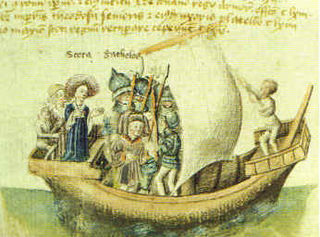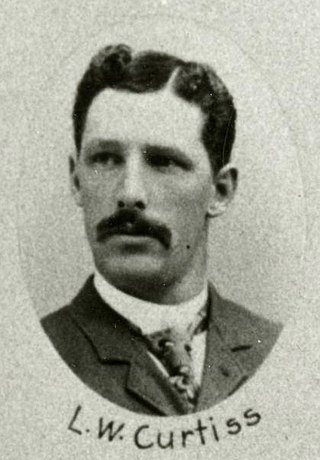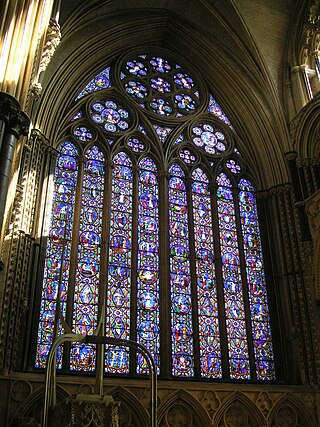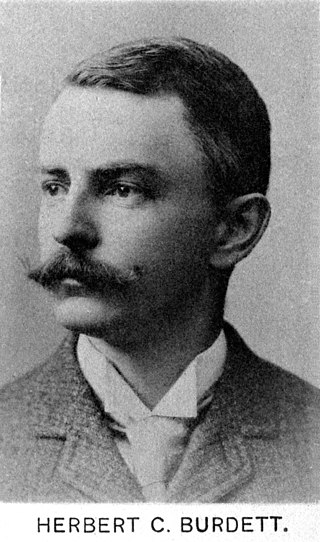Related Research Articles
Áed mac Cináeda was a son of Cináed mac Ailpín. He became king of the Picts in 877, when he succeeded his brother Constantín mac Cináeda. He was nicknamed Áed of the White Flowers, the wing-footed or the white-foot.

Little Britain Township is a township in southeastern Lancaster County, Pennsylvania, United States. The population was 4,134 at the 2020 census. It is part of the Solanco School District.

Sadsbury Township is a township in east central Lancaster County, Pennsylvania, United States. The population was 3,547 at the 2020 census.
Andrew Wyntoun, known as Andrew of Wyntoun, was a Scottish poet, a canon and prior of Loch Leven on St Serf's Inch and, later, a canon of St. Andrews.

David Laing LLD was a Scottish antiquary.

Lord Macduff, the Thane of Fife, is a character and the main antagonist in William Shakespeare's Macbeth (c.1603–1607) that is loosely based on history. Macduff, a legendary hero, plays a pivotal role in the play: he suspects Macbeth of regicide and eventually kills Macbeth in the final act. He can be seen as the avenging hero who helps save Scotland from Macbeth's tyranny in the play.

In medieval Irish and Scottish legend, Scota or Scotia is the daughter of an Egyptian pharaoh and ancestor of the Gaels. She is said to be the origin of their Latin name Scoti, but historians say she was created to explain the name and to fit the Gaels into a historical narrative.

The Battle of the North Inch was a staged battle between the Clan Chattan and the "Clan Quhele" in September 1396. Thirty men were selected to represent each side in front of spectators, including King Robert III of Scotland and his court, on land that is now the North Inch park in Perth, Scotland.
Leroy N. Brown was an American football and basketball coach. He was the head football coach at Michigan State Normal College—now known as Eastern Michigan University—in Ypsilanti, Michigan from 1912 to 1913, compiling a record of 6–5–2. He was also the head basketball coach at Michigan State Normal from 1912 to 1914, tallying a mark of 13–6.

The Scotichronicon is a 15th-century chronicle by the Scottish historian Walter Bower. It is a continuation of historian-priest John of Fordun's earlier work Chronica Gentis Scotorum beginning with the founding of Ireland and thereby Scotland by Scota with Goídel Glas.
The Gentleman Adventurers of Fife or Fife Adventurers were a group of 11 noblemen-colonists, largely from eastern Fife, awarded rights from King James VI to colonise the Isle of Lewis in 1598.
The Submarine Boys, by Victor G. Durham, is a series of adventure books for boys, published by Henry Altemus Company, Philadelphia, Pennsylvania, from 1909 through 1920. The series featured three sixteen-year-old boys and their underwater adventures.

HathiTrust Digital Library is a large-scale collaborative repository of digital content from research libraries including content digitized via Google Books and the Internet Archive digitization initiatives, as well as content digitized locally by libraries.
Clare Samuel Hunter was an American football and basketball coach. He served as at Michigan State Normal College—now known as Eastern Michigan University in Ypsilanti, Michigan for one season, in 1909, compiled a record of 2–4. Hunter was also the head basketball coach at Michigan State Normal from 1909 to 1911.

Cadland (1825–1837) was a British Thoroughbred racehorse and sire. In a career that lasted from April 1828 to 1831 he ran twenty-five times and won fifteen races, with several of his wins being walkovers in which all of his opponents were withdrawn. In the summer of 1828 he ran a dead heat with The Colonel in the Derby, before winning the race in a deciding run-off. He went on to have a long and successful racing career, winning a further eleven races before his retirement, and developing a notable rivalry with his contemporary Zinganee. Cadland was disappointing as a sire of winners in England and was exported to France, where he was much more successful. He died in 1837.

Tiresias (1816–1837) was a British Thoroughbred racehorse and sire. In a career that lasted from April 1819 to July 1820 he ran thirteen times, all but two of them at Newmarket and won eleven races. Both of his defeats came when he was attempting to concede weight to opponents in match races. His most important win came in May 1819 when he won the Derby. Tiresias's racing career was ended by injury in the summer of 1820, after which he was retired to stud.

Grace Mann Brown was an American writer and spiritual leader. Her work was related to the New Thought Movement, Divine Science and Christian Science. Much of her work focused on spirituality, metaphysics, mysticism, esoteric and occult sciences.

Leon W. Curtiss was an American politician in the state of Washington. He served in the Washington House of Representatives.

James Henry Nixon (1802–1857) was an illustrator and painter during the Victorian period, who worked in the firm Ward and Nixon painting stained glass windows. James Henry Nixon was a protégé of Charles Winston, who praised Nixon's work at Westminster Abbey and Church of Christ the King, Bloomsbury. The company Ward and Nixon was followed by Ward and Hughes.

Herbert Channing Burdett (1855–1891) was an American architect trained in the office of Henry Hobson Richardson who, in a brief career, established himself as a successful designer of Shingle Style and Richardsonian Romanesque buildings in western New York. With his partner James Herbert Marling (1857–1895), Burdett designed several public buildings in Buffalo, New York and a number of residential properties for the leading citizens of Buffalo, Woodstock, Ontario and Burlington, Vermont. Owing to his premature death, Burdett is little remembered today outside those areas where his known buildings still survive.
References
- Albano, Robert A. Middle English Historiography.